Words Amicia de Moubray Photographs Lisa Valder
Just a couple of miles from Faversham, on the road to Seasalter, is the captivating but little known- church of All Saints, Graveney. It is a jewel of an English parish church. As John Newman writes in Pevsner, ‘The church is a rarity in Kent, and would be a rarity in any county, except perhaps Norfolk; for it is not only delightfully unrestored but is worthwhile also as architecture and contains objects beautiful in their own right.’ I suspect if it was on Romney Marsh it would be much better known.
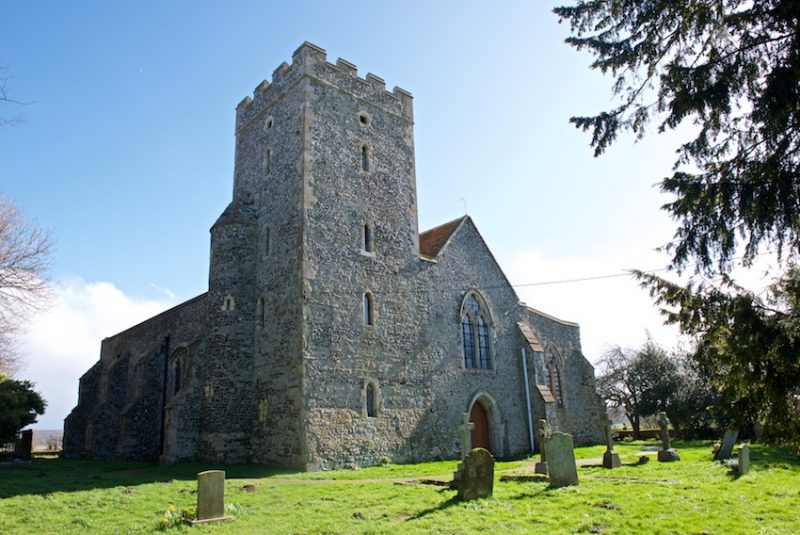
All Saints, Graveney

A pen and ink picture of Grayney (Graveney) Church by Francis Grose 1757
The church dates in part from the 12th century, when the monasteries of Canterbury owned the Seasalter marshes. Glimpsed from the road alongside its neighbour Graveney Court, it conjures up an image of a long vanished rural way of life, when probably nearly all the worshippers worked on the land for the Blaxland family (the past owners of Graveney Court). The church is awash with memorials to them. Before the Blaxlands, Graveney Court was built c.1420 by one Judge Martyn. There is a particularly fine brass (n. aisle) of John Martyn (died 1436) wearing the robes of a Justice of the Common Pleas, and his wife.

The handsome brass commemorating Judge Martyn (died 1436) and his wife. Note the splendid lion and the winsome pug-cum-whippet at the couple’s feet
Perhaps All Saints’ relatively remote flat marshland location explains why the church escaped unscathed from a heavy Victorian make-over?
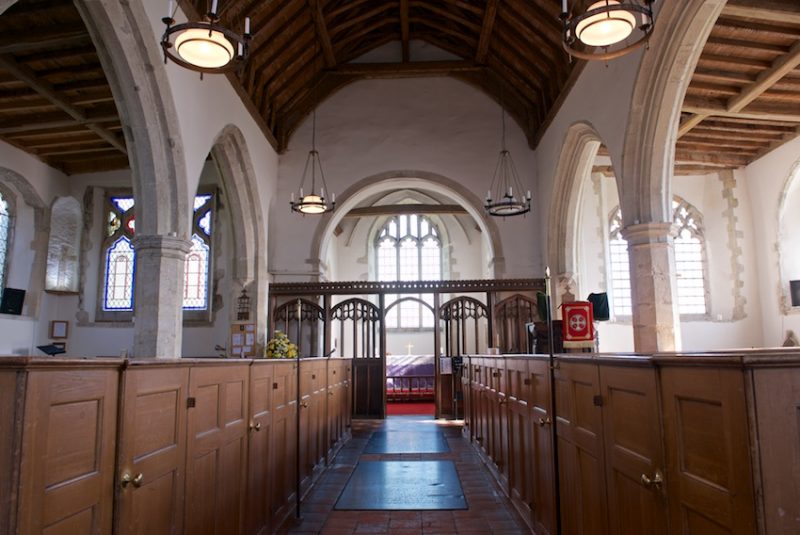
Painted wood grained box pews installed in 1823 and the early 16th century rood screens are just a couple of the many delights to be seen at All Saints, Graveney
Entering the church one is immediately struck by the handsome box pews installed in 1823. In 1925 there was a move to replace them with chairs. But these were deemed to be too expensive at £1.4s 6d; consequently the box pews remain to this day. A few medieval pews with poppy heads in the south aisle also still survive.
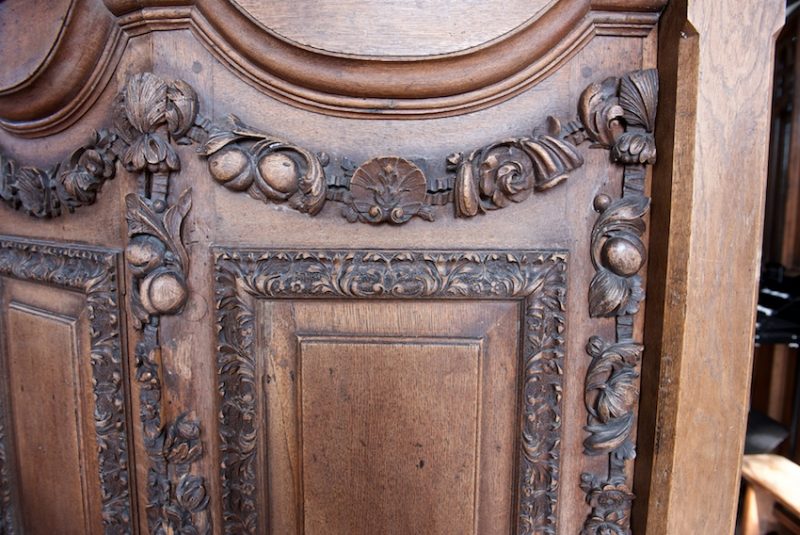
Exquisite carving in the style of Grinling Gibbons on the 17th century pulpit
There is much to delight at every turn: notably the early 16th century rood screen; the 17th century pulpit beautifully carved in the style of Grinling Gibbons with swags and flowers – it is thought to have come from St. Mary of Charity in Faversham; a 13th century chest, pleasing for its sheer simplicity, a 15th century octagonal lead font; and the so called ‘jumble window’ which incorporates several 15th century fragments of stained glass.
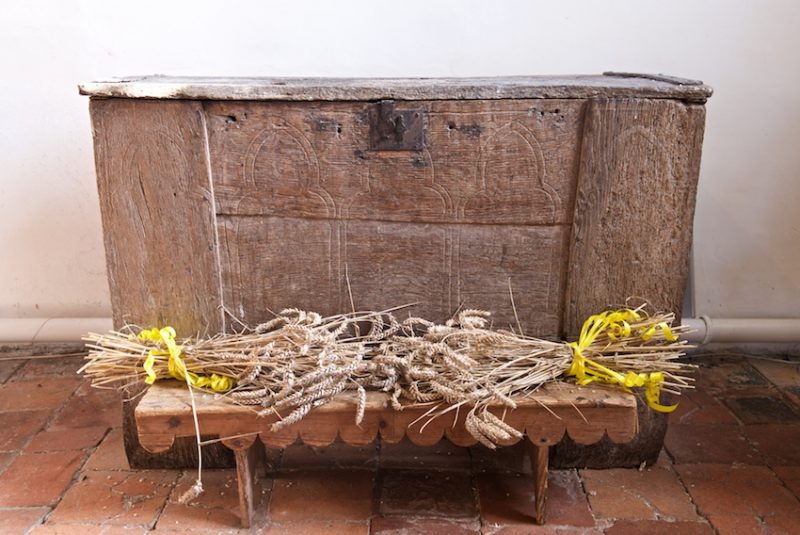
The 13th century chest
But alas, the future of the church is perilous, as keen readers of the Faversham News may recall. Last November the paper ran a small news story stating that its future was uncertain due to financial difficulties.
The extraordinarily worrying situation is clearly spelled out in a letter attached to an arch near the entrance of the church: ‘Current finances and poor attendance mean that we can only hold out for another two years. Just £1 per week from each of the 240 households in the village could ensure the continued presence of the church…..We need your support. Come and be made welcome. It would be a joy to see more of you before it is too late.’
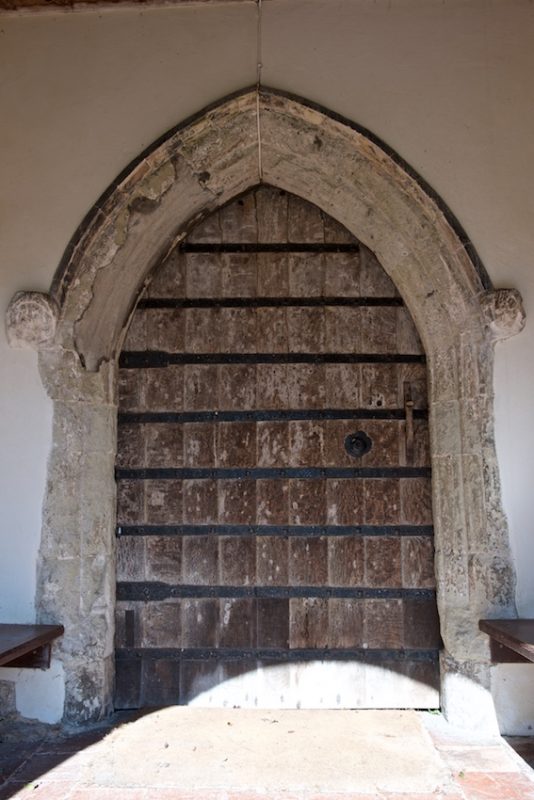
Entrance to the church is through a venerable door in the 14th century South Porch
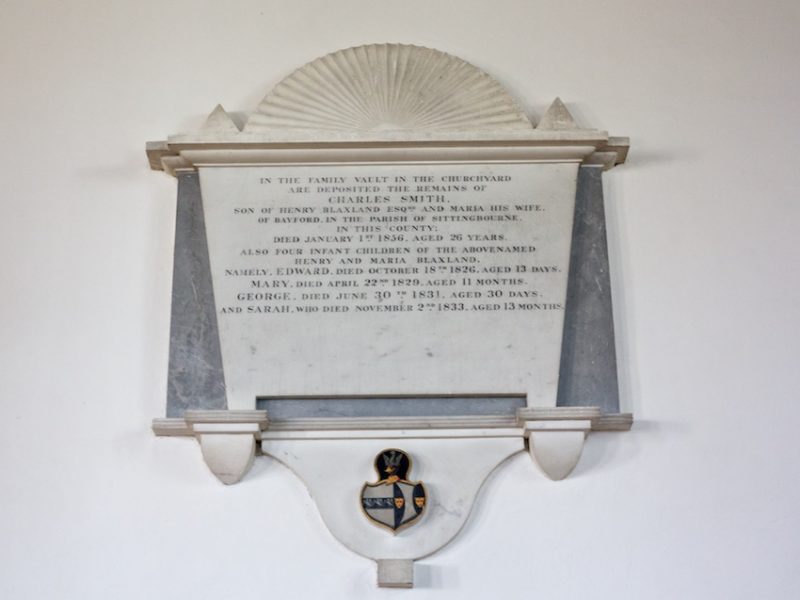
One of the many memorials to the Blaxland family, one time owners of Graveney Court
The church costs approximately £250 to run each week. In 2015, when the church’s dedicated priest, who took services unpaid, retired, the church was amalgamated with the churches of Boughton and Hernhill. Since then, it has had to contribute £181 weekly as the Parish Share of Ministry and Diocesan costs. This is a huge whack to pay, amounting to very nearly £13,000 annually.

The ‘jumble window’ which incorporates several 15th century fragments of stained glass
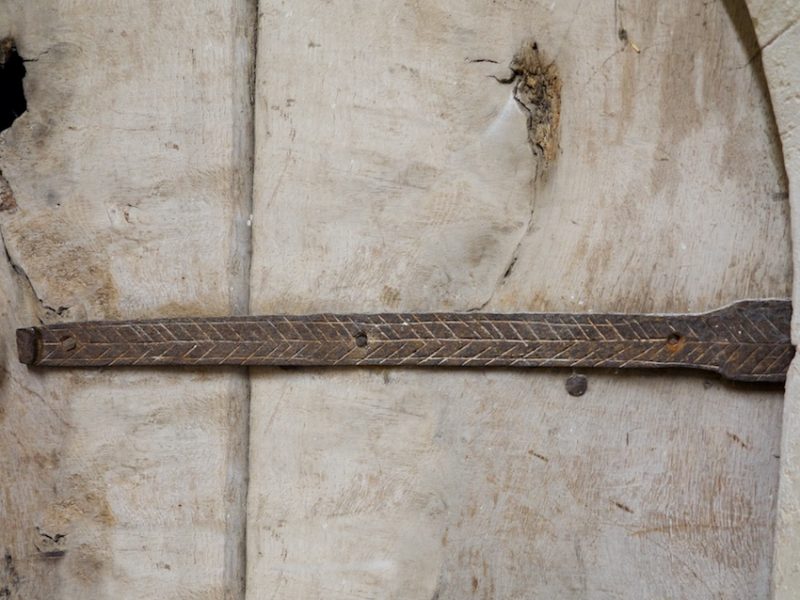
There are three services a month, and in 2019 the church had several christenings and a couple of weddings. It is also used by the village primary school for the Christingle, Harvest and the Leavers service each summer. The stalwart congregation of just seven souls work extraordinarily hard to keep the church open, holding an annual Flower Festival and a Christmas Bazaar as well as several concerts. In the summer, tea and coffee is on offer from 11am-3pm every Saturday. ‘We get a lot of passing trade, cyclists, walkers as well as motorists,’ says the Reverend Jean Burrows. ‘We get all the vintage buses stopping for tea from Faversham’s annual Transport Weekend,’ says Maggie Reynolds, one of the redoubtable congregation.
A splendid concert was held on Friday 6 March with the University of Kent Chamber Choir & Consort singing choral music by William Byrd, Henry Purcell and Rheinberger’s Stabat Mater.
It would be a sad day if All Saints were to close after nine hundred years of worship.
Concert at 7.30 on the 2nd May given by the Snowdon Colliery Band. Admission is free but there will be a retiring collection.
Any contributions gladly received by the Treasurer, Michael Page (pagemichael830@gmail.com).
Text: Amicia de Moubray. Photographs: Lisa Valder